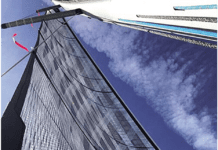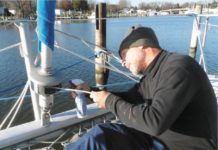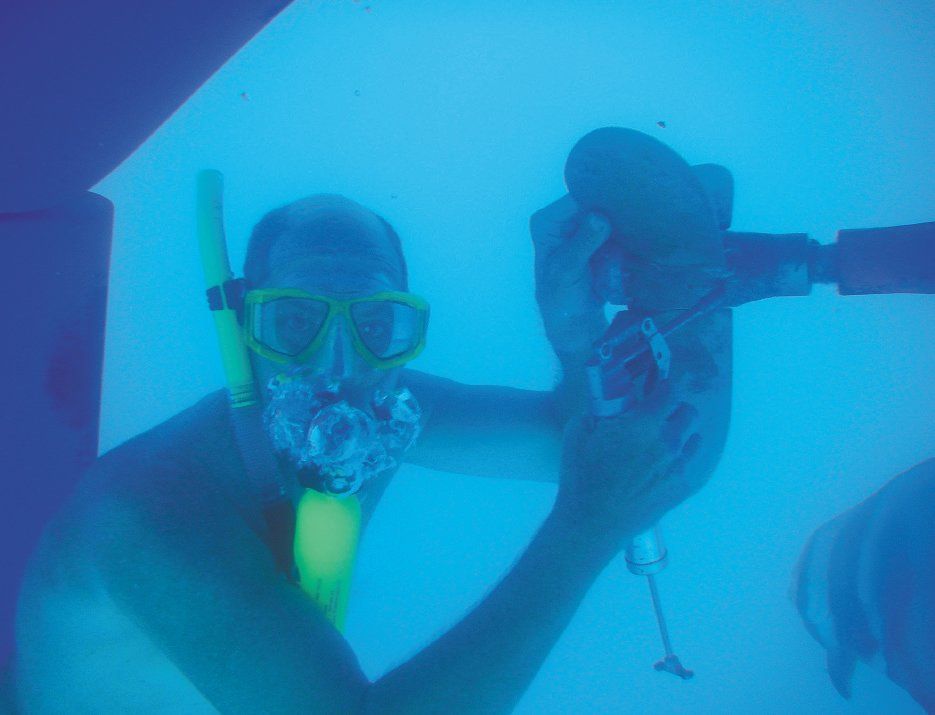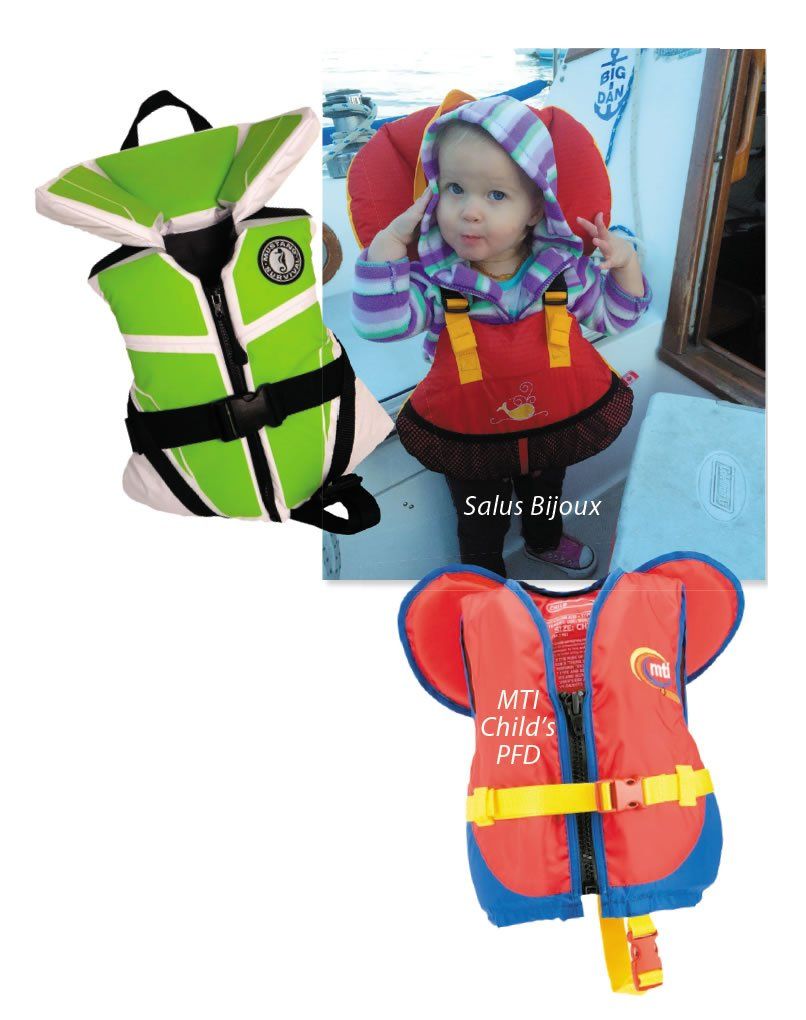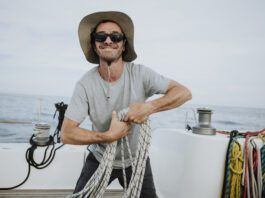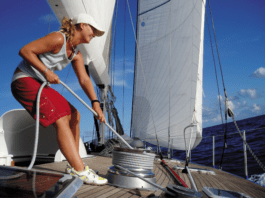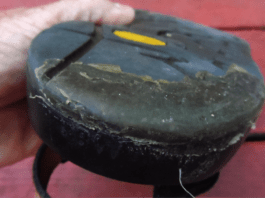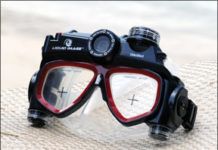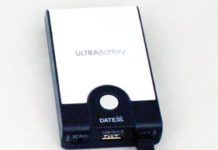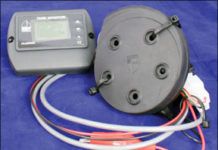Real Kids Sunglasses
Only a few sunglasses manufacturers featured in last summers test (July 2009) offer childrens sunglasses, and those shades are usually just scaled down versions of the adult kind. After experimenting with several different styles for kids ages 3-13, we found that the younger children, ages 7 and under, were a tough bunch to fit. Harder still were kids ages 3 and under. Uncomfortable ear pieces were a common complaint.
The Best Sailing Gear of 2010
Practical Sailor offers the annual selection of Editors Choice products for the Gear of the Year 2010 lineup. We hope the list will guide you through the dizzying array of gear at the fall boat shows, or at least help you whittle down your wishlist for Santa. The roster covers a broad spectrum of products-from gadgets for measuring speed to a performance multihull built for speed-that have bested their peers in our tests. The lineup includes gear from Spinlock, Brion Toss, Lopolight, Selden Mast, DuBarry, Keen, Standard Horizon, and Mastervolt. It covers LED navigation lights, bosun chairs, footwear for sailors, and marine electronics. Boat maintenance products from Polymarine and Interlux also made the list.
The Liquid Image 310 Video Mask
For those of us who spend nearly as much time under the water as on it, the Liquid Image 310 video mask sounded like a great addition to our diving kit-and a good fix for our gadget addiction-so we had to give it a try when we came across it at a spring boat show.
Sailing Sandals for Women
Testers set out to find a womens shoe that was comfortable wet or dry, didnt absorb water, provided traction and support, and was built to resist the odors typically associated with boat shoes. We looked at eight designs from four makers: Teva, Keen Footwear, Columbia Sportswear, and Sperry Top-Sider. Each sailing shoe faced grip tests on wet and dry surfaces, and funk tests to determine their ability to stave off stink and mildew. Men in the market for new sailing sandals can expect that the mens versions of these designs will have the same performance as far as grip and construction.
Camet Wahine Shorts for Her
After a frustrating and fruitless day of shopping locally for gear appropriate for a 30-something woman to wear on the race course, Practical Sailor editors set out on a mission to find a pair of padded sailing shorts that: fit properly (unlike most womens board shorts, which seem styled for a 13-year-old); did not look like theyd been borrowed from a mans locker; and were fast-drying, comfortable, and functional (even when hopping around a racer-cruiser or hiking on a dinghy). We found few options, and most of those were made by Camet International, a California-based sailing apparel manufacturer.
Columbia Mocs for Him . . .
As we noted in our last look at mens athletic-style boating shoes (June 2007), the marine footwear market is changing quickly. This hasn't necessarily been good for the consumer, as a lot of poorly executed "copycat" shoes are turning up at boat shows. Last year was the first time Practical Sailor had the opportunity to take a hard look at any boat shoe from Columbia Sportswear, an Oregon-based apparel company that over the last 10 years has expanded into the boating market. Testers put a pair of the companys PFG Sea Ray Boating Shoes through our battery of shoe tests (nonskid grip, water absorption, odor resistance, etc.) and then wore them around for six months. The ability to multi-task is one of the appeals of the moccasin style of boat shoe.
Mens Foul-Weather Gear Update
Practical Sailor recently tested the first line of foul-weather gear released by Massachusetts-based Bluestorm. The three mens bibs-and-jacket sets are named appropriately for the general areas they are designed for use in: the lightweight Latitude 33, medium-weight Latitude 48, and heavy-duty Latitude 61. The sailing jackets and bibs were tested for wind- and water-resistance, fit and comfort, design, construction quality, warmth, design and fit of hood, design and construction of zippers, and reflectivity. Small, innovative details that Bluestorm incorporated into its foulies include the triple-closure system for jacket storm flaps and recessed Velcro fasteners. All sets have excellent hood design, and testers found the jackets to be supple, highly breathable, and comfortable, if a bit pricey.
Stocking Stuffers For Sailors
Its hard to believe, but the 2009 holiday season is upon us. As is custom, Practical Sailor editors have put together a varied roundup of gifts to stuff those stockings more likely to hang from a bulkhead than the mantle. For the racing or small-boat sailor whos making the leap from wire rope to high-tech fiber, Colligo Marines Softies offer a lightweight alternative to traditional steel shackles and headsail hanks. Made of extra strong and chafe-resistant Dyneema, the "soft" hardware is the perfect solution for use with synthetic forestays, and unlike metal hanks, theyll never leave rust stains on sails. Using the Softies is as easy as pulling the shake-resistant knot through the expandable spliced loop, then sliding the slip ring (rubber O-rings) up to the knot. A lanyard ensures easy opening, but the self-tightening O-rings offer added security against accidental opening or shaking loose.
Sea-Boot Camp Tests Footwear for Traction, Comfort, and Quality
As with most types of sailing gear, picking the right sea boot is dependant on the user and intended use. Caribbean cruisers have different needs than offshore voyagers sailing in the high latitudes. Practical Sailors tested the performance and comfort of 15 pairs of mid-calf, knee-high, and three-quarter sea boots from Aigle, Dubarry, Gill, Helly Hansen, Puma, Sperry, Ronstan, West Marine, and Musto. Although you don't necessarily need to spend several hundred dollars for decent boots, we did find that boots priced at $150 and higher fared much better in our tests.
Practical Sailors Gear of the Year 2009
Practical Sailor editors pored over the dozens of products reviewed in the previous months to find the best of the best sailing gear, products that are worthy of the designation Gear of the Year. This years editors choice list includes a rugged rope clutch (Spinlock), a grippy ratchet block (Ronstan), feature-filled VHF handheld radios (Standard Horizon and Cobra), high-quality nesting cookware (Magma), a proven paste wax (Collinite), an ocean-ready first-aid kit (Adventure Medical Kits), a reliable LED bulb for cabin lighting (Imtra), an economical ice box conversion kit (Frigoboat), an innovative ultrasonic tank sensor (BEP Marine), cold-weather gloves (Gill), and an easy-to-install Wi-Fi booster (5mileWiFi).













